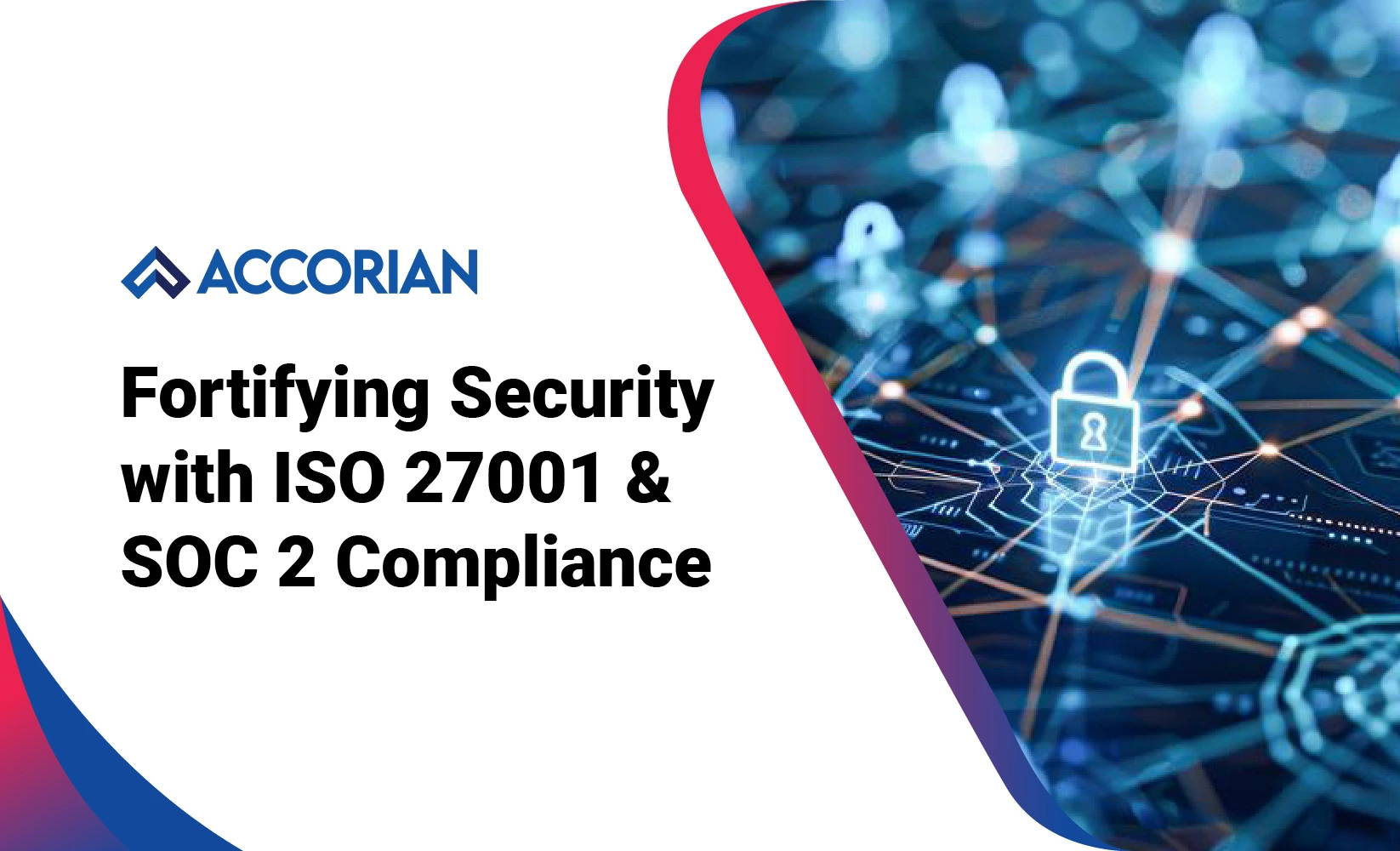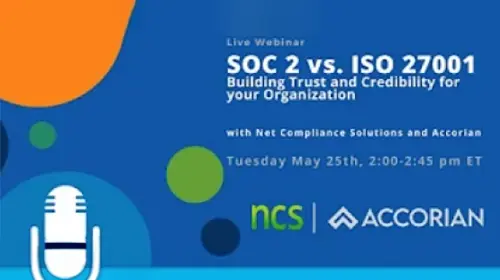SOC 2 Bundle
Take the Fast Track to Compliance with Accorian’s SOC 2 Bundle
SOC 2 compliance today is table stakes for doing business, but achieving it doesn’t need to be a complex and, fragmented process burdened by hidden fees, unreliable vendors, and unclear guidance. The Accorian SOC 2 Bundle, powered by GoRICO, and crafted by security experts, is a comprehensive solution designed to streamline your compliance journey and certification success. Our approach consolidates a powerful GRC platform and compliance requirements into one unified package, removing the typical barriers, hundreds of extensive hours, vendor coordination, and unexpected costs. With our offering, you can simplify compliance, optimize your resources, and make the most of your investment, allowing you to focus on what matters most:
Our in-house GRC platform and advisory services have helped firms achieve attestation without delays.
With over 20 years of experience, our program simplifies SOC 2 compliance while you focus on growth.
Not just audit ready, achieve SOC 2 attestation with transparent, upfront pricing—no hidden fees—ensuring a straightforward and transparent compliance journey.
The bundle is designed to get you attested for SOC 2 in < 8 weeks.
What is included in the
Accorian SOC 2 Bundle?
What is included in the Accorian SOC 2 Bundle?
GoRICO – OUR IN-HOUSE GRC PLATFORM
Gain seamless control over your compliance journey with GoRICO, automating risk assessments, evidence collection, and audit preparation, all in one unified dashboard.
GAP ANALYSIS
Gain a clear understanding of your current position and identify the areas of improvement.
RISK ASSESSMENT
Identify and address potential vulnerabilities before they evolve into issues.
PENETRATION TESTING
Experience real-world simulated attacks designed to fortify and ensure the resilience of your systems.
DOCUMENTATION SUPPORT
Easy-to-follow templates to make your documentation a breeze.
AUDIT PREPARATION
Get audit-ready with expert help—no surprises when it’s time for the official review.
HUMANIZED EXPERT SUPPORT
Expert guidance and personalized support by our experts to ensure smooth implementation and continuous compliance.
Security Policies in Minutes, Gap Identification in Days, & Attestation in Weeks!
Why the Bundle is a Game-Changer?
One Bundle, Everything You Need
From gap identification to readiness to audit, we’ve got it all covered.
Your Timeline, Your Pace
Our self-driving approach allows you to work at your speed without the stress of tight deadlines.
Expert Guidance, Every Step of the Way
Access seasoned SOC 2 experts who know exactly what you need to succeed.
Built for Growth
Designed for businesses on the rise—scalable solutions that evolve with your company’s needs.
Let our time-tested approach empower you
01
Attracting More Revenue
SOC 2 compliance is a must for securing new clients and building trust with investors. It’s a competitive edge that shows you prioritize security and customer data protection.
02
Removing Unnecessary Complexities
Achieving compliance doesn’t have to drain your time and resources. Our bundle is designed to be efficient so you can achieve SOC 2 compliance without delays or unnecessary complexity.
03
Making It Straightforward and Stress-Free
Say goodbye to navigating a maze of vendors, confusing jargon, and unpredictable costs. We’ve packaged everything you need into a simple, straightforward solution that keeps you on track.
04
Enabling Sustainable Growth
By achieving SOC 2 compliance, you demonstrate your commitment to security, which helps foster customer trust and creates the foundation for long-term business growth.
Access Our SOC 2 Bundle Brochure
Fast-Track Your SOC 2 Compliance with Accorian’s SOC 2 Bundle
Who Should Sign Up for the SOC 2 Bundle?
SOC 2 reports are often required for service firms across industries that store, process, or transfer sensitive data for their clients. We serve a diverse portfolio of industries, including:
Industries
- SaaS
- Healthcare
- FinTech
- AdTech
- MarTech
Next Gen Approach to SOC 2
We’ve made compliance simple – Are you ready to get started?
Why Choose Accorian?
Accorian is a leading cybersecurity firm specializing in providing comprehensive services to help companies achieve and maintain SOC2 compliance. Our team of auditors with extensive technical backgrounds and expertise in data security, possess the capability to conduct thorough assessments of your organization’s systems and controls.
Our audit professionals are skilled in preparing Type 1 and Type 2 reports for SOC2 audits. This includes conducting gap assessments, identifying necessary controls, and implementing them on behalf of your service business.
Accorian’s cybersecurity and compliance teams bring a wealth of experience to help navigate organizations through their information security journey. Our hands-on, white-glove approach combined with a goal-oriented, proven methodology brings both fiscal value and expertise to each of our clients. The facts speak for themselves.
FAQ’s
What is SOC 2 compliance?
SOC 2 is a set of security standards that ensures your business securely handles customer data. Businesses need to prioritize security, availability, and privacy.
How long does it take to achieve SOC 2?
With the Accorian SOC 2 Bundle, we streamline the process so you can achieve compliance faster—without sacrificing quality.
Which industries benefit from SOC 2?
Any business that handles sensitive customer data—tech startups, financial firms, SaaS providers, healthcare, and more—will benefit from SOC 2 certification.
How does the Accorian bundle work?
Our bundle includes everything you need to achieve SOC 2 compliance: risk assessments, penetration testing, documentation support, expert advisory, and ongoing assistance. It’s your one-stop shop for SOC 2 success.



